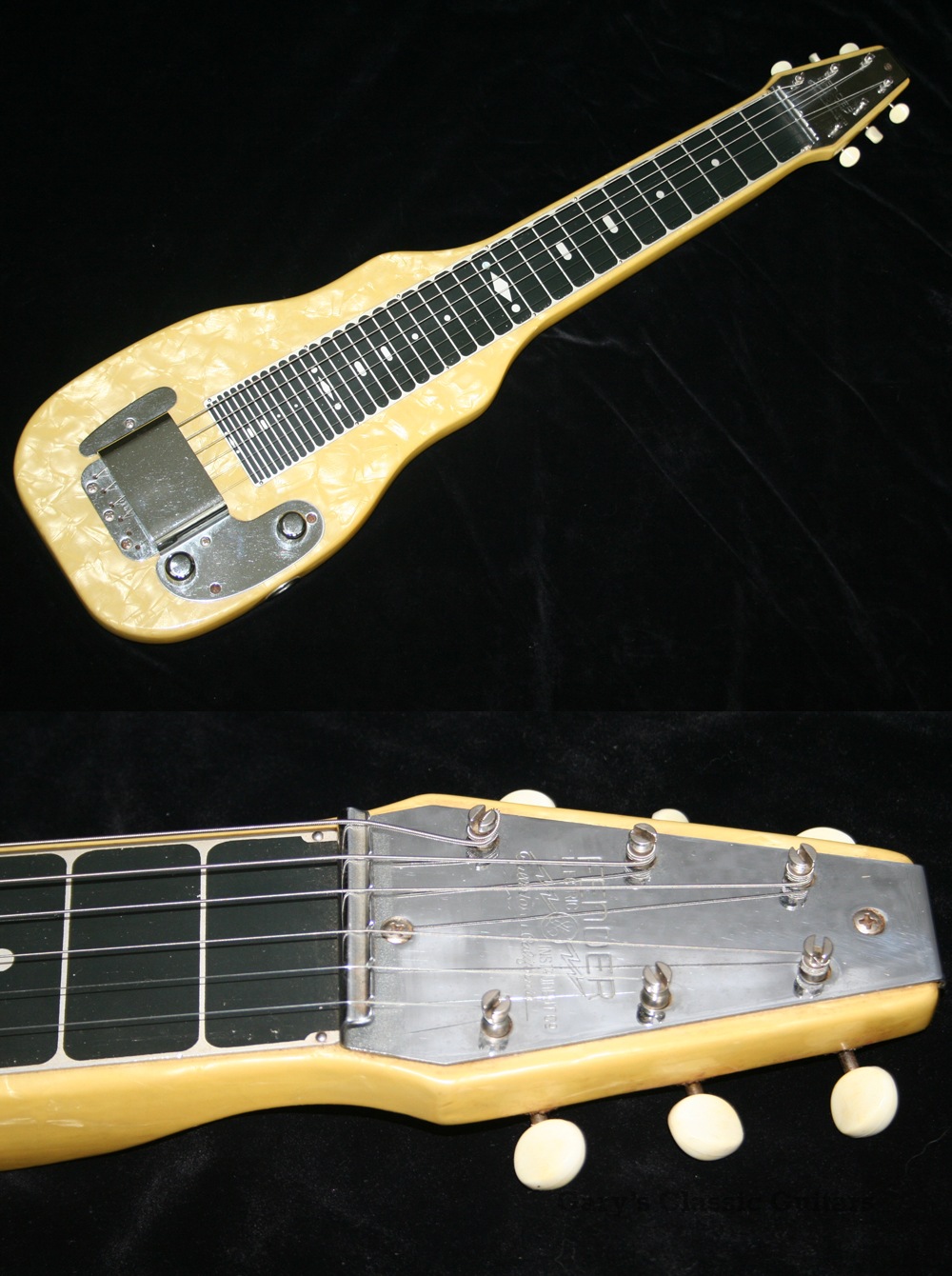

The only alteration is the addition of a cord between the top two tuners, allowing the instrument to be hung on a hook. It did have the tuners and metal fingerboard, however. The finish is original, and is variously referred to as Tan, Desert Sand or Desert Fawn. 1950s Fender Champ (kitbashed/mixed-up) lap steel guitar (w/'mando' stringing) Watch later Watch on Destroy your expectations A customer bought this mid-50s pearloid-covered Champ lap steel as a husk with its control plate, jack plate, and pickup missing. It was built during 1962 at the Fender plant in Fullerton, California, prior to Fender’s sale to CBS, and is in overall good condition with minor wear and tarnish to the plating.

Here we’re looking at a Fender Champ lap steel in original condition, with its original brown Tolex hard shell case, its bridge cover and a period steel. This popularity extended into the 1960s, when in my small town guitar lessons started with the Oahu method and an acoustic guitar with a nut extender. At the time, Hawaiian music was very popular, and lap steel guitars were easy to play – you just need to move a bar and strike the right strings. Like a number of other builders – some successful, others not – Leo Fender got into the electric guitar business by way of lap steels, with the first models appearing around 1948. The Champ Lap Steel replaced the Fender Champion steel, with the major differences being the ‘Desert Sand’ or tan finish on the Champ instead of the Pearloid (also known as Mother of Toilet Seat) cover on the Champion, and the simpler shape of the Champ.

Built from late 1954 until 1980, the Fender Champ Lap Steel was a popular budget instrument and often sold as a set with the 5-watt Champ tube amplifier.


 0 kommentar(er)
0 kommentar(er)
